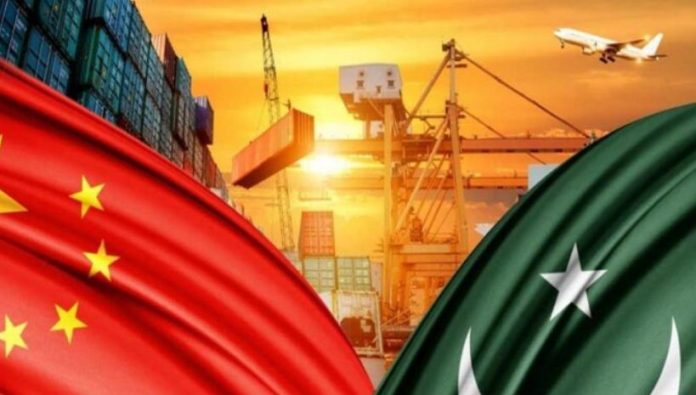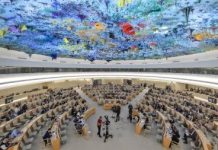By Muhammad Aslam
ISLAMABAD, Jan 10 (APP):As 2025 unfolds, with the integration of CPEC’s five corridors into Pakistan’s dynamic 5Es framework, the nation is poised for an era of unprecedented growth, hoping country’s economy to grow by US$ three trillion by 2047.
This strategic alignment ensures the country’s infrastructure projects are not just about development but fostering sustainable progress and global collaboration. The 5Cs—Growth Corridor, Livelihood Enhancing Corridor, Innovation Corridor, Green Corridor, and Opening-Up Corridor—outlined in the vision of Chinese President Xi Jinping for CPEC’s second phase, present a comprehensive development strategy.
This initiative complements Pakistan’s 5Es framework which includes Exports, Equity and Empowerment, E-Pakistan, Environment and Climate Change and Energy and Infrastructure.
“CPEC corridors are well-aligned with our 5Es framework and will play a pivotal role in their successful implementation,” said Minister for Planning, Development and Special Initiatives, Professor Ahsan Iqbal.
“This alignment represents one of Pakistan’s golden opportunities to achieve a $ one trillion economy by 2035 and a $ three trillion economy by 2047,” he emphasized.
This critical phase of CPEC aims to redefine bilateral relations by deepening collaboration, advancing technology transfer and launching transformative socio-economic projects. China’s commitment to advancing CPEC into Phase 2.0 is evident from its invitation to a 27-member high-level Pakistani delegation to Beijing.
This group of seasoned professionals from various fields will undergo specialized training to enhance their capacity for joint projects with Chinese counterparts.
“It is ‘once-in-a-lifetime opportunity’ to learn from China’s transformative journey,” Ahsan Iqbal mentioned highlighting significance of the mission. “It is also lesson learning as to how China has lifted over 800 million people out of poverty, offering a model for Pakistan to emulate through sustainable development and poverty alleviation under CPEC Phase 2.0.”
The delegation’s agenda includes key focus areas like establishing an economic growth corridor, advancing technology-driven industries, fostering innovation, addressing poverty alleviation and improving education and healthcare.
It will also prioritize accelerating energy transitions, promoting sustainable economic models, boosting exports and enhancing global supply chain linkages.
“This multifaceted approach positions Pakistan as a regional manufacturing and trade hub, fueling economic growth in South Asia,” Iqbal stated.
Reflecting on CPEC’s first decade, Iqbal noted the significant benefits Pakistan has derived from Chinese investments, particularly in the energy sector. “These investments have added 8,000 megawatts to national grid, playing a crucial role in resolving energy crisis that plagued the country in 2013-14.”
Through CPEC, the minister said, Pakistan has also constructed modern highways and motorways that connect different regions, stimulating economic activity. “We have also established a fiber optic cable, creating an information highway that connects Pakistan and China and strengthens country’s digital backbone.”
As another major component of CPEC, the Gwadar Deep Seaport is emerging as a key regional smart port with the potential to become a major trade hub. It links the Arabian Sea and Indian Ocean to western China, providing the shortest land route to the region.
The newly constructed Gwadar International Airport is set to begin flights during this month with plans for both domestic and international flights involving airlines from Pakistan, China, Oman and UAE.
With the country achieving another milestone of CPEC, Prime Minister Shehbaz Sharif also expressed optimism that new Gwadar International Airport will bring prosperity to region and create new job opportunities.
He had also thanked China for building an airport, equipped with state-of-the-art facilities, as a symbol of enduring Pakistan-China friendship.
In another significant development, construction has begun on the Chashma Nuclear Power Project Unit-5 (C-5), which will add 1,200 MW power to national grid and further diversify Pakistan’s energy mix.
Currently, Pakistan’s nuclear plants—four units at Chashma (C-1, C-2, C-3, and C-4) and two at Karachi—contribute over 3,530 MW to the grid.
During the first concrete pouring ceremony for C-5, China’s Ambassador to Pakistan, Jiang Zaidong, highlighted that the project will create approximately 40,000 jobs during peak construction. Additionally, the Suki Kinari Hydropower Station, with a nearly $2 billion investment, has started commercial operations.
Ambassador Zaidong emphasized that these projects are just a glimpse of the tangible outcomes of China-Pakistan cooperation, underscoring the steadfast nature of this partnership. “We must focus on an upgraded version of CPEC, taking concrete steps to build a growth corridor. The key lies in leveraging Pakistan’s industrial strengths.”
With an emphasis on innovation, sustainable development and inclusive growth, the second phase of CPEC marks a pivotal moment in Pakistan’s journey toward becoming a dynamic economic hub in South Asia—poised to enjoy the fruits of a prosperous future grounded in bilateral cooperation and strategic vision.
Being the CPEC of pivotal importance for Pakistan’s progress and prosperity, it is high time for all political stakeholders to rise above party affiliation for furthering this future lifeline of Pakistan to reach a goal awaited by the nation since its inception.
Any political uncertainty or uprising in the name of politicking or personal gains may not only hamper these development efforts but also drag Pakistan back to an era of under-development and poverty.

















